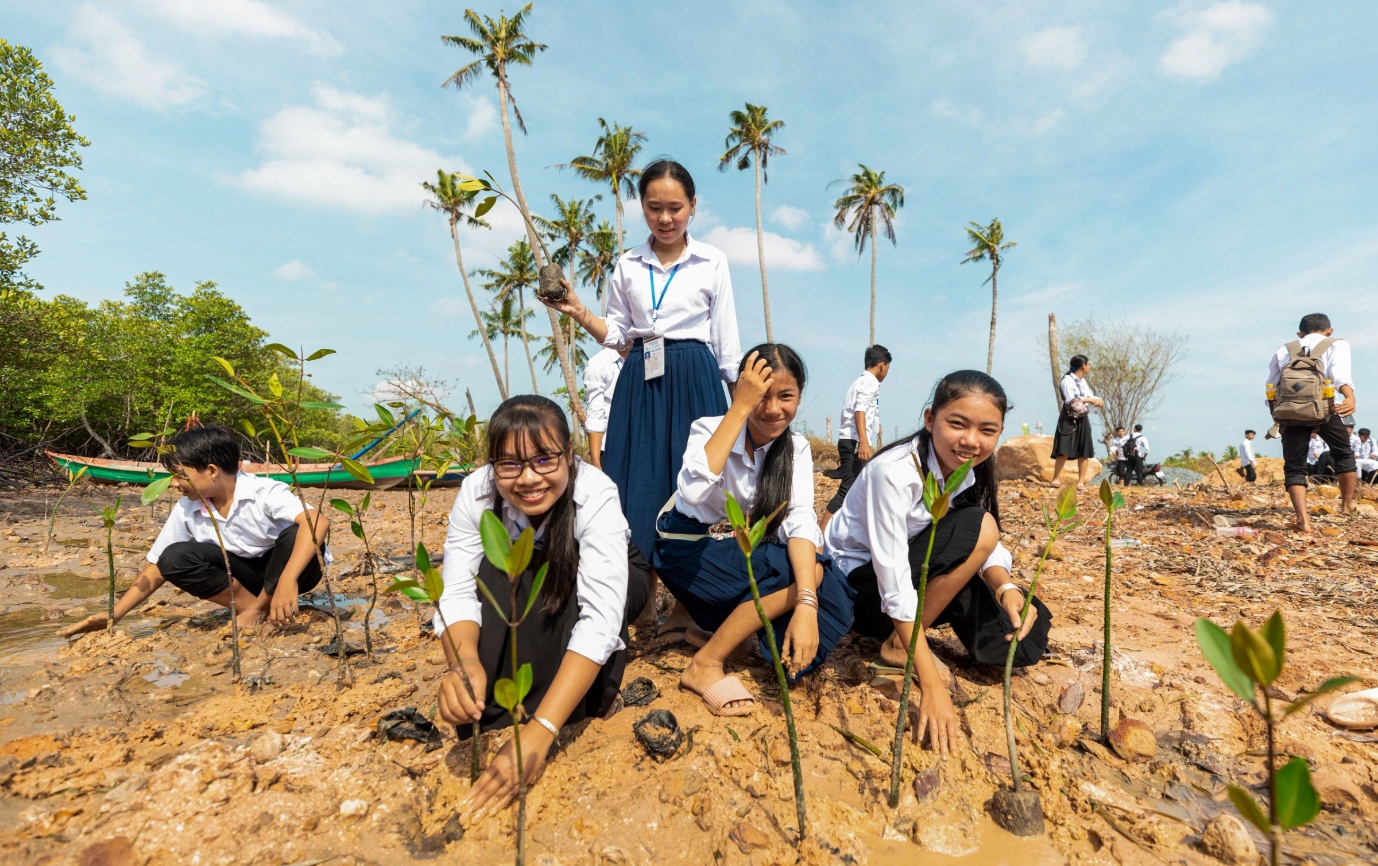
Cambodia has set a clear trajectory for its climate action. Following the update of its Nationally Determined Contribution (NDC) in 2020, Cambodia submitted an ambitious Long-Term Strategy for Carbon Neutrality (LTS4CN) to the United Nations Framework Convention on Climate Change (UNFCCC) – becoming the 1st country in the Association of Southeast Asian Nations (ASEAN) to submit a strategy with a 2050 target. Reducing historical emissions from deforestation by 50% by 2030 is central to the mitigation targets set by Cambodia, representing almost 60% of its NDCs overall target. By 2050, Cambodia expects the forest sector to become a significant carbon sink.
The implementation of Cambodia’s NDC will require an estimated US$ 7.8 billion by 2030, while achieving the 2050 target will require public and private investments to grow from around US$500 million a year to US$2.5 billion a year. This includes the implementation of Cambodia’s Action and Investment Plan for National REDD+ Strategy to achieve ambitious emissions reductions in the forest sector at an estimated cost of $185.7 million by 2031. The need for access to significantly scaled-up finance to realize Cambodia’s ambitious climate mitigation goals is clear, and with the completion of the Paris Rulebook in Glasgow at COP 26, international carbon markets will offer new opportunities to mobilize much needed investments.
Between 2016 and 2020, the generation and sale of emissions reduction credits from Cambodia’s forest sector generated approximately US$12 million. The country has been taking various steps to sustain and expand this important source of carbon finance. Key among them, Cambodia is developing a nested system which aims to harmonize all emissions reductions in the country, across different scales and regions. A key objective is to ensure environmental integrity1, i.e., transparency and accountability, by avoiding double-counting of emission reductions. As such, this reinforces Cambodia’s commitment to advance the institutionalization and regulation of REDD+, and the development of mechanisms to facilitate Cambodia’s participation in carbon markets.
The government is indeed aware of the challenges to ensuring integrity in the voluntary markets. Since last year, the country has participated as an observer in the Voluntary Carbon Market Initiative (VCMI) to develop guidelines for the high-quality use and claim of carbon credits. UNDP, as partner in this Initiative, recognizes voluntary carbon markets as an effective tool to channel climate financewhen they are aligned with UNFCCC principles and environmental and social safeguards, and are tailored to the national context.
After the negotiations at COP26, especially those agreed upon under Article 6.2, new and important t prospects have opened for Cambodia to access climate finance with a global network of potential donors and carbon credit buyers. To take advantage of these opportunities, Cambodia is advancing: (1) development of an institutional architecture that can facilitate and incentivize the development of site-specific carbon projects; (2) national or subnational REDD+ approaches as a key instrument in halting deforestation; and (3) the direct participation of communities. These governance arrangements would create the right business environment and can efficiently drive private sector investments into high-impact mitigation to reach net zero, driving Cambodia’s mitigation goals along that pathway.
To support this process, UNDP’s Climate and Forests Programme is providing technical assistance for the application of the Paris Agreement Land Use, Land Use Change and Forestry (LULUCF) Assessment and NDC Tool (PLANT). PLANT is an agile database that unifies country data on emissions from the land use, land use change and forestry sector. By systematizing, visualizing, and sharing national data publicly, the tool allows forest countries to assess key elements and take informed decisions for the implementation of the Paris Agreement from the perspective of the LULUCF sector. PLANT has been populated with data from 56 REDD+ countries (including Cambodia) and 16 jurisdictions and is being used to evaluate options and support countries’ decisions for the implementation of their NDCs.
More broadly, Cambodia, with support from UNDP through global UNDP initiatives like the Climate Promise and the Climate Finance Network, is strategically considering how regulated and voluntary international carbon markets can offer opportunities for mobilizing investments in priority sectors such as forests and land use, in line with its updated NDC and LTS4CN. As first step, a workshop was jointly organized in March 2022 to strengthen the capacities of technical and senior national partners on carbon markets. The workshop provided an overview of carbon markets, as well as a more detailed overview on Article 6 under the UNFCCC and explored the implications of corresponding needed adjustments for Cambodia's NDC and the LTS4CN. As part of the workshop, priorities and initial inputs were collected to move forward with the estimation of (1) the mitigation potential for different sectors included in the NDC and (2) the emission reductions Cambodia could potentially make available for sale in carbon markets.
Moving forward, Cambodia is exploring how to engage in Article 6 and the voluntary carbon market and how to identify best relevant fast-track and high-integrity actions to support and finance its NDC implementation. UNDP is ready and committed to continue supporting its preparedness and access to high integrity carbon markets for accelerating social, economic, and environmental benefits, and the achievement of the Cambodia Sustainable Development Goals.

